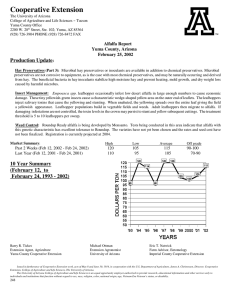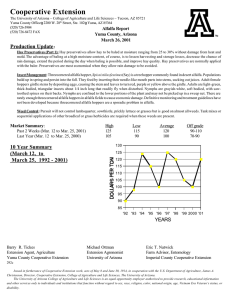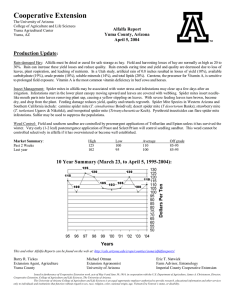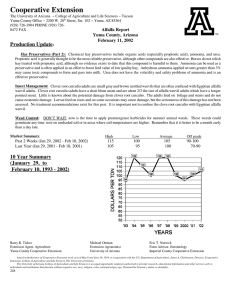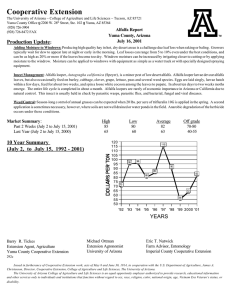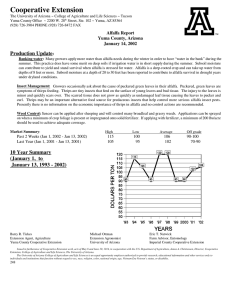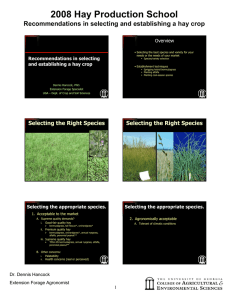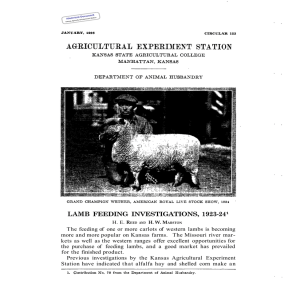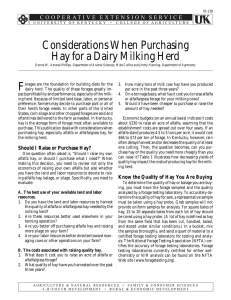Cooperative Extension
advertisement
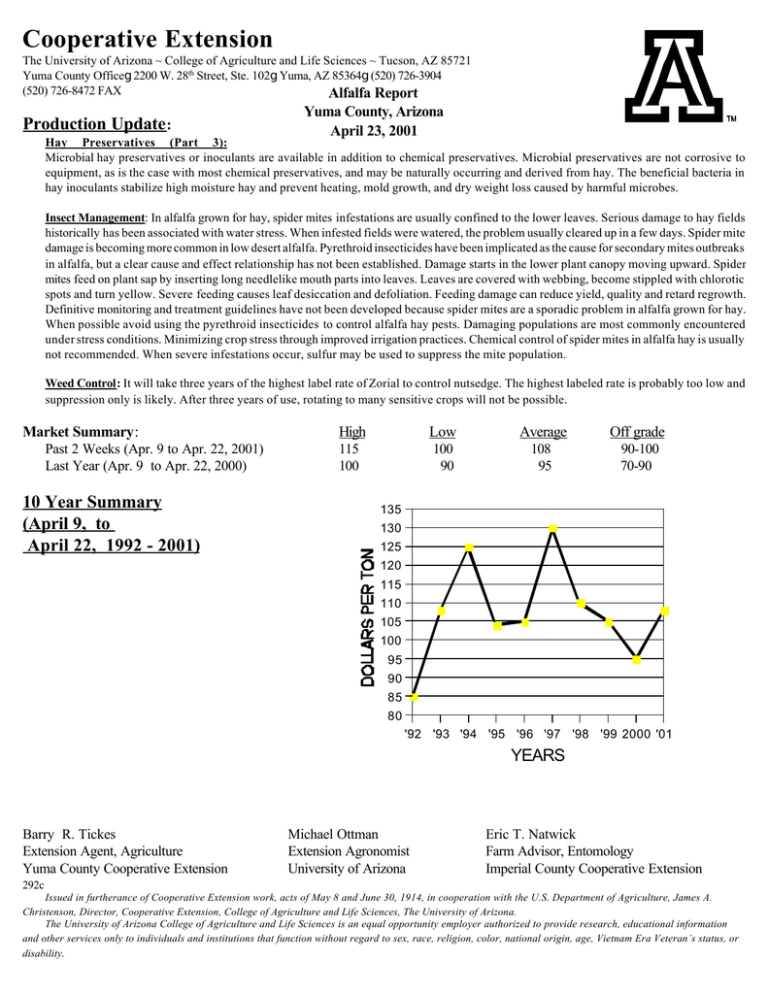
Cooperative Extension The University of Arizona ~ College of Agriculture and Life Sciences ~ Tucson, AZ 85721 Yuma County Officeg2200 W. 28th Street, Ste. 102gYuma, AZ 85364g(520) 726-3904 (520) 726-8472 FAX Alfalfa Report Production Update : Yuma County, Arizona April 23, 2001 Hay Preservatives (Part 3): Microbial hay preservatives or inoculants are available in addition to chemical preservatives. Microbial preservatives are not corrosive to equipment, as is the case with most chemical preservatives, and may be naturally occurring and derived from hay. The beneficial bacteria in hay inoculants stabilize high moisture hay and prevent heating, mold growth, and dry weight loss caused by harmful microbes. Insect Management: In alfalfa grown for hay, spider mites infestations are usually confined to the lower leaves. Serious damage to hay fields historically has been associated with water stress. When infested fields were watered, the problem usually cleared up in a few days. Spider mite damage is becoming more common in low desert alfalfa. Pyrethroid insecticides have been implicated as the cause for secondary mites outbreaks in alfalfa, but a clear cause and effect relationship has not been established. Damage starts in the lower plant canopy moving upward. Spider mites feed on plant sap by inserting long needlelike mouth parts into leaves. Leaves are covered with webbing, become stippled with chlorotic spots and turn yellow. Severe feeding causes leaf desiccation and defoliation. Feeding damage can reduce yield, quality and retard regrowth. Definitive monitoring and treatment guidelines have not been developed because spider mites are a sporadic problem in alfalfa grown for hay. When possible avoid using the pyrethroid insecticides to control alfalfa hay pests. Damaging populations are most commonly encountered under stress conditions. Minimizing crop stress through improved irrigation practices. Chemical control of spider mites in alfalfa hay is usually not recommended. When severe infestations occur, sulfur may be used to suppress the mite population. Weed Control: It will take three years of the highest label rate of Zorial to control nutsedge. The highest labeled rate is probably too low and suppression only is likely. After three years of use, rotating to many sensitive crops will not be possible. Market Summary: Past 2 Weeks (Apr. 9 to Apr. 22, 2001) Last Year (Apr. 9 to Apr. 22, 2000) 10 Year Summary (April 9, to April 22, 1992 - 2001) High Low Average Off grade 115 100 100 90 108 95 90-100 70-90 135 130 125 120 115 110 105 100 95 90 85 80 '92 '93 '94 '95 '96 '97 '98 '99 2000 '01 YEARS Barry R. Tickes Extension Agent, Agriculture Yuma County Cooperative Extension Michael Ottman Extension Agronomist University of Arizona Eric T. Natwick Farm Advisor, Entomology Imperial County Cooperative Extension 292c Issued in furtherance of Cooperative Extension work, acts of May 8 and June 30, 1914, in cooperation with the U.S. Department of Agriculture, James A. Christenson, Director, Cooperative Extension, College of Agriculture and Life Sciences, The University of Arizona. The University of Arizona College of Agriculture and Life Sciences is an equal opportunity employer authorized to provide research, educational information and other services only to individuals and institutions that function without regard to sex, race, religion, color, national origin, age, Vietnam Era Veteran’s status, or disability.
